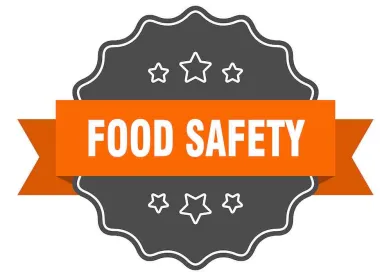While most people have probably never heard of a Food Safety Plan, these plans are critically important to manufacturers and consumers alike. A Food Safety Plan tracks the creation and packaging of the food from the ingredients to the final product. At every step, the Food Safety Plan seeks to identify and minimize the risk of pathogens, foreign objects, etc., from getting into the food. The final step of a Food Safety Plan is a recall plan. A recall plan is designed to minimize potential harm if, despite the manufacturer’s best efforts, something goes wrong.
Recently, a pet food manufacturer announced a voluntary recall of dog and cat food. The recall came after reports of a number of dogs dying and more becoming sick after consuming the affected food. There are no reports of injuries to cats (or to people who may have handled the food). This recall highlights the importance of a functioning food safety plan for manufacturers of animal food.
When reports came in of dogs who had consumed the impacted food, the company issued a recall (presumably of all lots of pet food which contained grain that may have contained aflatoxin). The good news is that a pre-existing recall plan permitted rapid mobilization of a recall effort so that as few animals as possible were impacted.
Aflatoxin is a mycotoxin (a metabolite of the fungi Aspergillus flavus; A. parasiticus and A. nomius). Mycotoxin production depends on many different factors including temperature, humidity, moisture content of feed, competing microorganisms, the ability of the fungus to invade seed or other plant material, and maturity of the surface material on which the fungus lives, grows, or obtains its nutrients. Aflatoxin production is most common in drought-stressed or insect-damaged corn, when the breakage of the plant is increased. The fungus can also infect other crops such as wheat, walnuts, cotton, peanuts and tree nuts.
Since corn and other grains are common ingredients in pet food, high levels of aflatoxin can cause illness and death in pets. Pets can have an increased susceptibility to the toxin as they typically eat the same, unvaried diets. Identification of aflatoxin in pet food is not blatantly obvious; mycotoxin production by mold can occur in either field or storage conditions. The presence of a mold does not necessarily indicate the presence of a mycotoxin, and the absence of a mold does not necessarily indicate the absence of a mycotoxin.
Aflatoxins are immunosuppressive, carcinogenic, toxic to the liver, and can affect the body’s blood clotting ability. Pets experiencing aflatoxicosis may have symptoms, including lethargy, loss of appetite, vomiting, jaundice, widespread bruising, weight loss, diarrhea, or blood in the stool. Some pets may suffer liver damage and show no signs of illness.
The Food Safety Modernization Act (FSMA) has set up a regulatory framework that focuses on preventive measures to anticipate and minimize the likelihood of hazards in both human and animal food that could cause foodborne illnesses. As with the manufacture of human food, manufacturers of animal feed have to create Food Safety Plans for their products. The creation of a Food Safety Plan involves a Preventive Controls Qualified Individual (PCQI) reviewing all of the ingredients and processes involved in the manufacture of animal food to identify any biological, chemical, radiological or physical hazard that could cause injury or illness. Procedures then have to be developed to eliminate / minimize the hazards. The efficacy of the developed procedures to control the hazards also has to be validated, meaning that manufacturers have to document the ability of their procedures to control the anticipated hazards. Records have to be kept showing that all procedures are followed in order to verify the implementation of the procedures. An important part of every food safety plan is a recall plan. If hazards are found to exist in food, despite the manufacturer’s best efforts to control them, the final step in a Food Safety Plan is a recall plan. Before the first product is shipped, a plan to identify and retrieve any impacted food has to be developed and ready to deploy. Prior to FSMA, written recall plans were not required in Hazard Analysis Critical Control Point (HACCP) plans for manufacturers. Consequently, manufacturers could be left to figure out a recall plan after a problem occurred.
While it is heartbreaking that an illness or injury occurred to any animal, a pre-existing recall plan helps to minimize injuries. The recent voluntary recall is an example of a Food Safety Plan in action. The recall was issued after reports of dogs being sickened and dying due to aflatoxin poisoning, but other dogs who could have been impacted, if recall efforts were delayed, were spared.
For the manufacturer, what happens after a recall? After a recall, the Food Safety Plan should be reevaluated to determine what went wrong and how to correct it. Perhaps new procedures are needed to identify and control hazards, such as, more frequent testing of grain ingredients for aflatoxins, holding grains at lower humidity levels, or perhaps the problem arose with conditions at the supplier of an ingredient and the supplier’s food safety procedures need to be reevaluated. Whatever the ultimate answer, the FSMA Food Safety Plan provides a framework for anticipating, minimizing and correcting food safety hazards when they arise.



 />i
/>i


